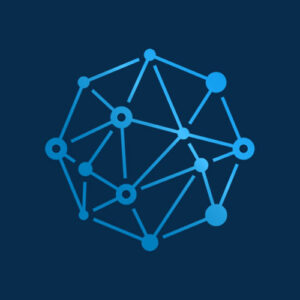In meetings with large enterprise customers, I am often asked about TIDWIT’s digital ecosystem network architecture and why it is different from simple Application Program Interface (API) connectivity, which is what is typically preached by large consulting firms when discussing digital ecosystems. The simple answer: API connectivity is based on point-to-point architecture. TIDWIT is based on point-to-network architecture. There is a big difference between the two.
Imagine if every time you needed to call someone new on a fixed line, you had to lay copper cables between your home and them (a point-to-point connection, or P2P). Aside from being impossibly expensive, as a solution it is neither optimal nor scalable. This is why phone networks developed. Instead of P2P lines, today all we have to do is connect our fixed phone to the home socket, which is already connected to a network, and we have the possibility of connecting to billions of others connected to phone networks all over the globe (point-to-network, or P2N). Once the initial cost is covered, our marginal cost for this connectivity is ZERO, whether we call friends, a neighborhood grocer, or a supplier in Tokyo. Life today without P2Ns is unthinkable: the internet being a prime example, plus Facebook, and LinkedIn, to mention just a few.
Let’s go a little deeper on the detail. Point-to-point (P2P) connectivity means a company would have to connect with others one step at a time. So if you have 50 partners or vendors or strategic allies and want to connect to each of them, you would need to do it 50 times via their set of APIs and your set of APIs. These are 50 separate projects with 50 separate teams, timelines, and budgets. And that’s not all. You then would have to make sure that any updates on your systems’ APIs or theirs do not negatively affect connectivity. If it does, your tech team will have to mend the API connections, one at a time. Any update you make on your APIs will imply 50 adjustments to each of the connections. Therefore, the marginal cost of P2P is variable and calculated as the number of connections multiplied by the cost per connection. The more connections, the higher the cost.
Point-to-network (P2N) connectivity, however, means you only have to connect to the network via one set of APIs. Once on the network, you can connect with anyone else who is also connected without any need to do anything on your part. There is no additional integration or API work needed. Therefore, the marginal cost of P2N is ZERO. Once integrated with the network, no matter how many new connections are added, there is no need for further integration cost.
The Digital Ecosystems Network allows for the same level of network by providing P2N in the same way. All an organization has to do is connect to the TIDWIT Digital Ecosystems Network (DEN) once and from that point onwards it will be able to seamlessly connect to any other organization on the network.
For businesses seeking accelerated growth and competitive advantage, point-to-network (P2N) digital ecosystems – unlike point-to-point (P2P) API-based digital ecosystems – offer seamless, instant, dynamic, affordable access with infinite scalability. And the best part is this technology is available to implement today.







